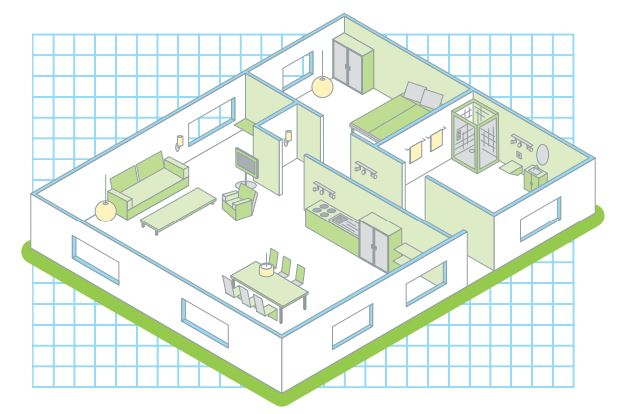Introducing the algorithm with 80% accuracy that does the work for you when reconstructing smart home configuration out of the ETS project file

The global home automation market is going crazy at the moment, soon almost every device we bring into our homes will be smart. In the last three years, the IoT market gained a lot of popularity due to its user-friendliness and also due to the fact that it’s great at covering the gap with smart home AV, cleaning and security devices.
But the development of all these new devices with different communication protocols calls for interconnectivity that so far hasn’t been present in the KNX industry, or any smart home industry for that matter. At least not in a friendly way. What the market needs is a simpler way to add new devices to an existing smart home and control them from a single interface.

This need is well represented by multiple companies tackling the same problem from different sides.
For example:
- The support for importing KNX group addresses is added to almost every visualisation server. And while this cuts some workload away from implementing an add-on, it’s nowhere near the end solution which would solve this problem in a holistic way.
- A better attempt was made by Schneider Electric as they have tackled this problem by developing the eConfigure tool, Theben used a similar approach with their LuxorLiving platform. With those solutions they are able to generate a full home configuration based on the home plan. The issue with those platforms is that they are limited to their own devices (eConfigure and LuxorLiving) and are closed within their ecosystems.
- Control4 which is mostly represented in the US market is slowly moving into the KNX world and aims to be easily integrated into any KNX home. This is why they’ve built an automated tool that integrates the most popular KNX devices into their own platform.
Even though KNX installation does not store human-readable configuration but rather functions that are then grouped into channels with added text description fields. There is however still room for improvement by utilising modern practices of software and machine learning.
Where do solutions go from here?
Thinka and Pairot are great examples of the next evolutionary steps as they attempted to tackle this challenge by reconstructing the best practices of installer configuration techniques. These best practices (e.g. group address naming and group address rules) enabled them to do it - but in reality it’s really hard to follow them and because of that most installers don’t. Again, they made a next step in simplifying the process, but this is still nowhere as simple that it would drastically cut the time of the installer labor, or even further that it would allow the end-user could do it on their own.
What is the breakthrough solution that 1Home delivers?
We have approached the challenge from another angle and we’re proud to say we have built an auto-detection algorithm that guarantees for 80% accuracy in reconstructing smart home configuration out of the existing ETS project file.
How did we do it?
We designed the solution based on analysing and learning from tens of thousands of smart home projects. The algorithm is using SVM (support-vector machines) to learn how Group Addresses are typically constructed into a logical device for specific KNX actuators and sensors.
After building a database of KNX catalogue functions, we have grouped these functions into more than 80 function classes that are needed for visualization and voice control. On top of that we have developed a machine learning model using methods of natural language processing and classification algorithms.
This model combined with some other techniques now firstly recognizes the functionality of each datapoint (e.g. on, off, percentage…). Next, based on the detected datapoint functionalities and grouping rules, we identify the device type behind each channel. We then reconstruct the device names based on all the functions defining a specific device type. The last step is grouping the devices by room of the house (if information is included in the ETS project file).
All in all - comparing our auto-detection technique with the best examples we have seen on the market (Thinka and Pairot) - our model outperforms both in recognizing Lights, Thermostats, Sensors and Scenes - while offering the same accuracy in recognizing Blinds.
What does this bring us in practice?
Well, we are already using the new algorithm to offer the simplest way for KNX smart home installers and owners to retrofit voice control and visualisation apps in existing smart homes. We basically let them integrate Smart Assistant platforms (Amazon Alexa, Google Home, Apple HomeKit) in a matter of minutes. Installers and users are also able to integrate all IoT devices supported by those platforms (over 100k devices in total) with their core home base. This enables them to build interconnected automations over a superior interface and all that with almost no invested labor. Voice, touch, sensors, location, time - any of those can be a trigger for device actions to happen inside two different communication protocols (IoT & KNX / wireless & wired).
And what do you think? Where should we implement the algorithm next to provide the most value to you as a smart home user or installer? Let us know (support@1home.io) and we will get right to it!